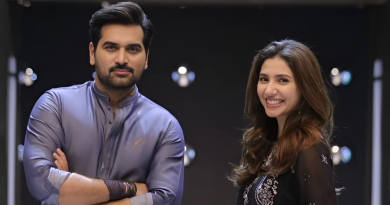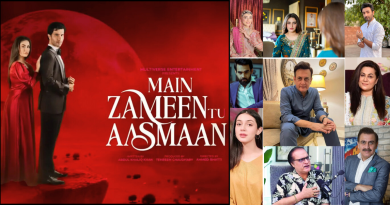How Parwarish Uses Maya’s Story to Reflect a Dark Reality

For more sotries
As someone raised among cousins who felt more like siblings, I tuned into Parwarish expecting a warm portrayal of joint-family chaos and sibling-style bickering. And in many ways, the drama delivers exactly that. It thrives on the little conflicts that erupt under one roof petty arguments, misunderstood intentions, family politics. But what truly sets Parwarish apart, and keeps viewers like me emotionally invested, is the evolution of Maya, played with haunting nuance by Aina Asif.
Maya starts as the archetype of a good daughter bright, focused, quietly ambitious. Her dream isn’t outlandish: she wants to become a doctor. It’s a goal that feels both respectable and achievable, the kind that a family might rally behind. But this hope is systematically drained from her. As her arc unfolds, we witness how patriarchy doesn’t always shatter a woman’s aspirations with overt violence. Often, it’s a slow tightening of control, veiled under the guise of protection or love.
This isn’t an unfamiliar story. Women whose futures are slowly chipped away first by overbearing fathers, then by possessive fiancés—exist all around us. In fact, it’s that very commonality that makes Maya’s story hit so hard. We recognize her. We know someone like her. Her pain isn’t just scripted drama it’s an uncomfortable truth that mirrors what unfolds in real homes, behind closed doors, and far too often, on the news.
At first glance, Maya seems “lucky” her marriage is arranged with a financially stable man, Waleed, who promises to support her education. But that supposed freedom comes with invisible chains. She’s allowed to pursue her dreams, yes but only if Waleed can monitor her every move. Her life, once hers to envision, becomes a project that serves the expectations of the men around her.
Waleed isn’t the cartoonish villain many dramas resort to. His cruelty operates in the gray areas understated, manipulative, and insidious. He masks control with charm, using subtle jabs and invasive behaviors to gradually dominate Maya’s life. What makes him truly terrifying isn’t just his temper, but his strategic emotional manipulation. He gaslights her into believing she’s difficult, overreacting, or simply imagining things. And like many real-life abusers, he hides behind flowers and forced affection until he has full control.
In Episode 17, that control crosses a line. Waleed assaults Maya in her own home, dropping the façade. “Don’t say no to me. I don’t like hearing refusal,” he tells her cementing that Maya is no longer seen as a partner, but as a possession. It’s a harrowing moment, not because it’s explosive, but because it’s so quiet, so real. Abuse doesn’t always come with bruises. Sometimes, it comes with whispers and silences.
In one of the most powerful scenes so far, Maya breaks. She confides in her mother about the immense pressure from both her father and fiancé, and later tells her sister she fears becoming her mother a woman who lived a life of quiet submission. Her words, “I don’t want to live my mother’s life,” aren’t just rebellion they’re a plea for help, and a declaration of self-awareness rarely allowed for women in TV dramas.
Maya’s experience isn’t just a fictional cautionary tale. It echoes real-life tragedies that remain etched in public memory like Sania Zehra, a young woman found dead in her home, her death hastily labeled a suicide despite clear signs of abuse. Or Sana Yousaf, a teenage influencer whose life was brutally ended for refusing a man’s advances. These aren’t isolated stories. They are patterns predictable, preventable, yet constantly overlooked.
Even years after her murder, Qandeel Baloch remains a haunting reminder of how a woman’s worth is debated based on how she chooses to live. Whether someone is seen as a victim often hinges on their perceived modesty or respectability. And in that lies the ugliest truth: for many women, help arrives only after death if it arrives at all.
Parwarish gives us a Maya who might still be saved. But off-screen, too many Mayas never are. Her character is compelling not because she is exceptional, but because she is painfully ordinary. She is every girl who complies to keep peace, who lowers her gaze to stay safe, who tries to make herself small so she can fit into the narrow definitions of a “good” woman.
So while Parwarish may offer Maya a chance at escape or justice, it forces us to confront an unsettling question: how many real women must fall before we decide they are worth saving while they are still alive?
Welcome back to our website! We’re thrilled to have you here again.Since your last visit, we’ve made
exciting updates and additions.Discover new content, features, and products tailored to your interests.
Our team has worked tirelessly to enhance your user experience.Take a fresh look around and explore the
changes.We’re committed to continuously improving and providing value to our valued visitors like you.
Thank you for your continued support. We look forward to serving you again and making your visit an
enriching experience.



